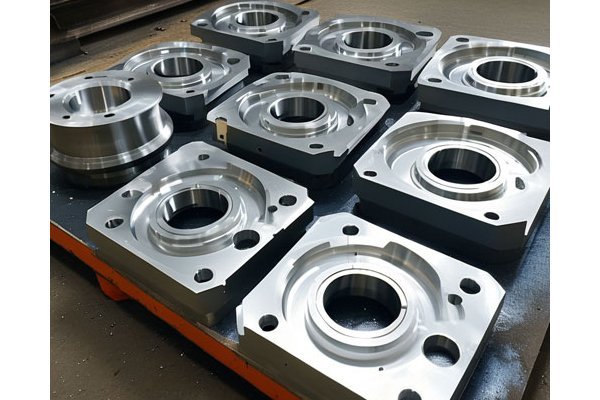Did you know that according to a recent industry report, over 70% of companies reported significant improvements in product development timelines by integrating CNC (Computer Numerical Control) milling into their prototyping processes? This remarkable statistic emphasizes the transformative impact that CNC milling technology has on product development, particularly in the realm of rapid prototyping.
As businesses strive for speed and efficiency in bringing ideas to market, CNC milling stands out as a leading solution. In this comprehensive guide, we’ll delve deeply into the applications of CNC milling in rapid prototyping, explore the advantages it offers, and provide a detailed breakdown of techniques and best practices to maximize its effectiveness.
—
CNC milling is a subtractive manufacturing process that uses computer-controlled machines to remove material from a workpiece to create complex shapes and features. This method allows for precise control over dimensions and tolerances, resulting in high-quality prototypes that closely resemble the final products. CNC milling machines can operate on various materials, including metals, plastics, composites, and wood, making them versatile tools for numerous applications.
Prototyping is a crucial step in the product development lifecycle. It allows designers and engineers to visualize concepts, assess performance, and identify potential design flaws before mass production. Rapid prototyping, in particular, emphasizes speed and efficiency, enabling teams to iterate quickly based on feedback and testing outcomes. In this context, CNC milling offers a powerful tool to create functional prototypes that accurately represent a product’s design and functionality.
Integrating CNC milling into rapid prototyping processes yields numerous advantages:
4.1 Aerospace

The aerospace industry relies heavily on rapid prototyping to test designs for aircraft components. CNC milling allows for the production of lightweight, high-strength prototypes used in wind tunnel testing and other evaluations. The ability to quickly iterate designs is crucial in an industry where safety and performance are paramount.
4.2 Automotive
In automotive development, CNC milling is utilized to create components such as engine parts, brackets, and interior fixtures. Prototyping of these parts ensures that they not only fit correctly but also meet safety and performance standards. The use of CNC milling speeds up the process of bringing new car models to market.
4.3 Medical Devices
Medical device manufacturers use CNC milling to prototype complex instruments such as surgical tools and implants. Given the stringent regulatory requirements in the healthcare sector, producing accurate prototypes quickly is essential for the testing and certification process.
4.4 Consumer Electronics
The consumer electronics market thrives on innovation and speed. Companies use CNC milling to prototype cases, components, and parts for devices ranging from smartphones to wearables. Rapid prototyping not only allows for extensive testing of ergonomics but also ensures that the final product meets consumer expectations.
5.1 Material Selection
Choosing the right material is critical for successful CNC milling in rapid prototyping. Factors such as strength, weight, durability, and cost must be considered. Common materials include aluminum, steel, plastics (like ABS and nylon), and composites. Each material has distinct machining properties that influence the milling process.
5.2 Design for Manufacturability (DFM)
Design for manufacturability (DFM) focuses on creating designs that can be easily and cost-effectively machined. Engaging with CNC milling professionals during the design phase can help identify potential issues, streamline processes, and optimize prototypes for lower production costs.
5.3 Toolpath Optimization
Optimizing the toolpath used in CNC milling is crucial for enhancing efficiency and finish quality. Techniques such as adaptive machining can minimize tooling wear and save cycle time, while advanced software solutions can analyze and improve toolpaths for complex geometries.
5.4 Tolerance and Finish Specifications
Setting appropriate tolerances and finish specifications early in the prototype phase ensures the final product aligns with performance requirements. CNC milling allows for tight tolerances and high-quality surface finishes based on customer specifications.
While CNC milling provides numerous advantages, challenges can arise, such as:
The future of CNC milling in rapid prototyping looks promising, with trends such as:
CNC milling is revolutionizing the rapid prototyping landscape, providing exceptional speed, precision, and versatility across various industries. By understanding its applications, integrating key techniques, and being aware of future trends, businesses can significantly enhance their product development processes.
In a competitive market where innovation and speed are crucial, the integration of CNC milling into rapid prototyping not only streamlines processes but also increases the potential for successful products. As we continue to evolve in manufacturing techniques, embracing CNC milling is not just important—it’s essential for staying ahead of the curve and meeting the ever-growing demands of the market.
Remember, in today’s fast-paced world, effective prototyping made possible by CNC milling could very well be the key to your organization’s future success.






